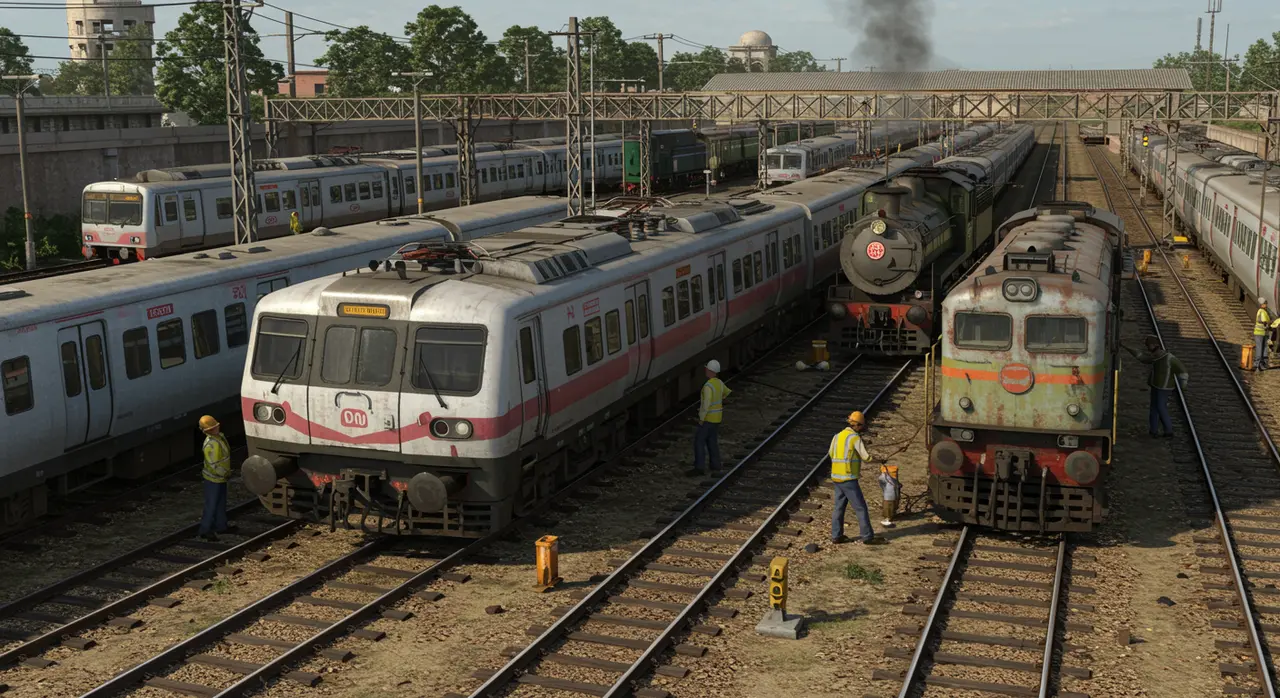DMRC and Indian Railways Partner to Revolutionize Wheel Maintenance with Advanced Laser Technology
37 views
The Delhi Metro Rail Corporation (DMRC) has inked a significant Memorandum of Understanding (MoU) with Indian Railways to introduce advanced Automatic Wheel Profile Measurement Systems (AWPMS) at four railway depots. This initiative, set to be completed within 18 months, aims to modernize wheel maintenance processes by employing cutting-edge laser-based technology, thereby enhancing operational efficiency and reducing reliance on traditional manual inspections.
Revolutionizing Rail Maintenance: DMRC and Indian Railways Join Hands for Technological Leap
The collaboration between DMRC and Indian Railways marks a pivotal step towards integrating automation into India's railway infrastructure. At the heart of this initiative lies the AWPMS technology, a sophisticated system designed to conduct non-contact, real-time measurements of train wheel profiles. By utilizing laser scanners and stepper motors, AWPMS can analyze wheel dimensions and wear patterns with remarkable precision, eliminating the need for labor-intensive manual assessments.

The DMRC, known for its expertise in urban rail operations, has taken on the responsibility of overseeing the procurement, supply, installation, testing, and commissioning of these systems. This comprehensive approach ensures that the project will be executed with the same level of efficiency and technical rigor that has become synonymous with the Delhi Metro. The timeline of 18 months underscores the urgency and commitment to bringing this transformative technology to Indian Railways' depots.
The significance of this development extends beyond mere technological adoption. Train wheels, being the critical interface between rolling stock and tracks, endure substantial wear and tear over time. Regular maintenance is essential to ensure safety, minimize downtime, and optimize performance. However, conventional methods of wheel inspection, which often involve manual measurements, are not only time-consuming but also prone to human error. The introduction of AWPMS promises to alleviate these challenges by providing accurate, real-time data that can be seamlessly integrated into maintenance workflows.
This initiative also reflects a broader trend within India's transportation sector, where automation and digitalization are being embraced to enhance efficiency and safety. The adoption of AWPMS aligns with the Indian Railways' ongoing efforts to modernize its infrastructure and operations. By leveraging advanced technologies, the railways aim to meet the growing demands of a rapidly urbanizing population while reducing operational costs and environmental impact.
While the immediate benefits of AWPMS are evident in terms of improved maintenance practices, the long-term implications are equally compelling. The data generated by these systems can be utilized to develop predictive maintenance models, enabling railway operators to anticipate and address potential issues before they escalate into costly repairs or service disruptions. This shift from reactive to proactive maintenance represents a paradigm shift in how railway systems are managed.
Moreover, the collaboration between DMRC and Indian Railways sets a precedent for inter-agency partnerships in addressing common challenges. By pooling resources and expertise, the two organizations are demonstrating the power of collective action in driving innovation and achieving shared goals. This model of cooperation could serve as a blueprint for future initiatives aimed at enhancing India's transportation infrastructure.
As the project progresses, it will be interesting to observe how the integration of AWPMS influences the broader ecosystem of railway operations in India. Will this technology pave the way for further automation in other aspects of rail maintenance and operations? Could it inspire similar advancements in other modes of transportation, such as buses or freight logistics? These are questions that remain to be answered as the journey unfolds.
In a country where railways serve as the lifeblood of connectivity, the importance of maintaining a robust and efficient system cannot be overstated. The collaboration between DMRC and Indian Railways, underpinned by the adoption of AWPMS, is a testament to the transformative potential of technology in addressing age-old challenges. As the wheels of progress turn—both literally and figuratively—this initiative serves as a reminder of the boundless possibilities that emerge when innovation meets determination.